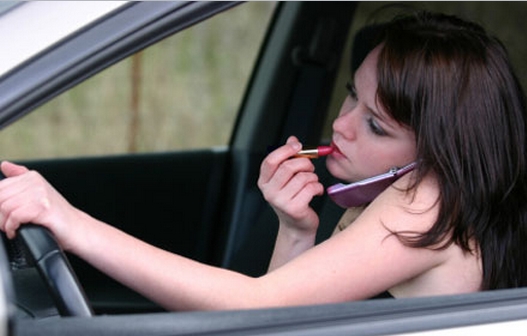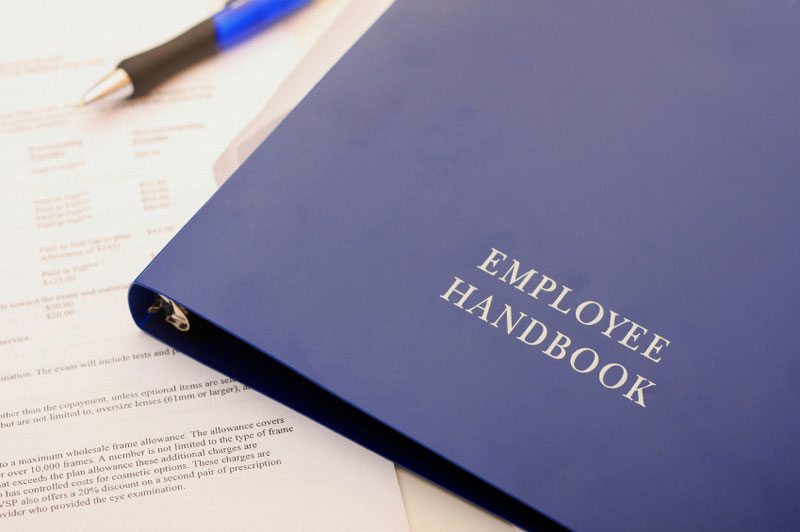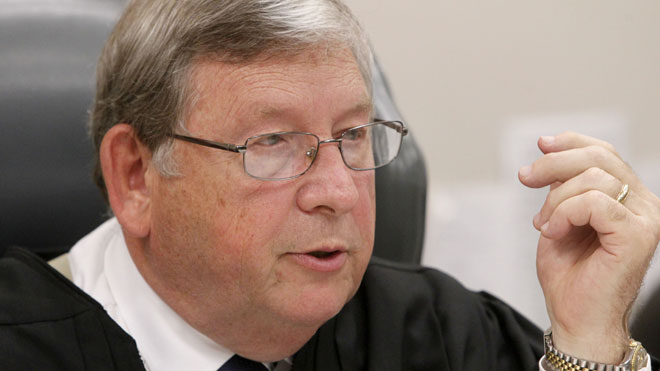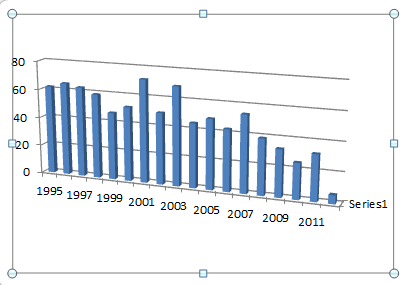Texting and Driving Infographic
Courtesy OnlineSchools.com

Courtesy OnlineSchools.com

 The New Jersey couple who were hit by a texting driver while riding their motorcycle settled their case against the driver for $500,000. Both Mr. and Mrs. Kubert, who were on the motorcycle, lost a leg because of the motorcycle accident.
The New Jersey couple who were hit by a texting driver while riding their motorcycle settled their case against the driver for $500,000. Both Mr. and Mrs. Kubert, who were on the motorcycle, lost a leg because of the motorcycle accident.
We wrote about this story in May (Distracted Driving Lawsuits: Suing the Sender, and Lawsuits Against Text-Senders: Conclusion). There, the trial judge ruled that the plaintiffs did not have a case against the person who sent the text message, only the driver who read it. The lawyer in the case is appealing that decision, though I still wonder how he will get paid if he wins.
The $500,000 settlement only applies to the driver of the car. It looks like that is the policy limit, so the driver’s insurance paid everything it had.
Given the prevalence of cell phones and smartphones, the likelihood is that many if not most automobile accidents are caused by distracted driving. The NHTSA estimates about 3,000 fatal distracted driving auto accidents in 2011. One study suggests that cell phones may be the cause of 1.6 million accidents per year, which is 28% of all auto accidents. Maryland has been improving the laws year after year, but some research questions whether existing laws around the nation are good enough.
 As far as punishment, some believe that higher fines will increase compliance, just as it did for seatbelt laws. New Jersey is considering a $200 fine for the first offense with a license suspension for 90 days for the third offense. Connecticut has already increased fines to $125 for a first offense. In Maryland, the fines are relatively light. Talking on a cell phone can cost $40 for a first offense and $100 for subsequent offenses. Sending or reading e-mails or texts is punishable by $70 fine for the first offense and $110 for subsequent offenses.
As far as punishment, some believe that higher fines will increase compliance, just as it did for seatbelt laws. New Jersey is considering a $200 fine for the first offense with a license suspension for 90 days for the third offense. Connecticut has already increased fines to $125 for a first offense. In Maryland, the fines are relatively light. Talking on a cell phone can cost $40 for a first offense and $100 for subsequent offenses. Sending or reading e-mails or texts is punishable by $70 fine for the first offense and $110 for subsequent offenses.
We should beef up the penalty provisions–larger fines and points (right now, there are no points issued for speaking on a phone for the first offense unless it causes a collision). Financial penalties provide most people with an incentive for good behavior, which will lead to safer roads.
 The scourge of distracted driving is so bad that I predict many attorneys will be adding to their lawsuits complaints against employers for failure to have policies, procedures and protocols to discourage distracted driving. First, a little bit about agency.
The scourge of distracted driving is so bad that I predict many attorneys will be adding to their lawsuits complaints against employers for failure to have policies, procedures and protocols to discourage distracted driving. First, a little bit about agency.
An agent is someone who is working for someone else. When an employee gets in his car to go do something for his employer, he is the agent of the employer. When the driver negligently causes a Maryland auto accident, both the driver is responsible and the employer is responsible.
Because distracted driving is such a big deal right now, employers are jumping on the bandwagon to come up with policies about when their employees can and can’t use cell phones while driving. Some companies are prohibiting the use of handheld phones; others are prohibiting all cell phone use, even hands-free conversation. Where an employer does not take the step to set a policy, they are setting themselves up for more liability in the event of an accident. Realistically, they will be on the hook for any auto accident injuries regardless of whether the company was negligent, but it gives one more reason for the judge or jury to decide that the company is responsible. Also, it puts forth negative conduct by the company, which makes a jury more likely to decide against them if the question of liability (whether the employee was negligent) is unclear.
 A driving simulator called One Simple Decision, made by Virtual Driver Interactive http://www.driverinteractive.com/index.php is attempting to show driver’s the short and long-term consequences of texting and driving. It starts with the driver driving, and then instructs the driver to begin texting. When the (hopefully) inevitable collision occurs, the driver goes through a first-person interrogation by police, medical personnel, and a judge in an attempt to show chronic texters the real-life consequences of distracted driving.
A driving simulator called One Simple Decision, made by Virtual Driver Interactive http://www.driverinteractive.com/index.php is attempting to show driver’s the short and long-term consequences of texting and driving. It starts with the driver driving, and then instructs the driver to begin texting. When the (hopefully) inevitable collision occurs, the driver goes through a first-person interrogation by police, medical personnel, and a judge in an attempt to show chronic texters the real-life consequences of distracted driving.
The allure of a simulation like this is the desire to beat it, like any videogame. I know the dangers of texting and driving, but (I suspect like most people), I think that I can do it relatively safely. So what happens when a driver beats the simulator? Is that a license to text and drive? I’d like to know the simulators statistics.
Regardless, it is clear that in a controlled situation, the driver is going to bring his or her A-game. In real life, there will be less attention to detail, and a higher likelihood of a distracted driving accident.
 Our last post on Distracted Driving Lawsuits: Suing the Sender ended with one question: what will happen?
Our last post on Distracted Driving Lawsuits: Suing the Sender ended with one question: what will happen?
As predicted, the New Jersey trial judge dismissed the sender of the text message. The judge stated that it was reasonable for text-senders to assume that text-receivers will act responsibly. He also noted that drivers must deal with numerous distractions: phones, GPS devices, and road signs, to name a few.
Were I to extend this duty to this case, in my judgment, any form of distraction could potentially serve as the basis of a liability case.
 In a distracted driving lawsuit where phone use is the culprit, the recipient of the e-mail or the text message is obviously at fault, and a proper defendant. Drivers must use reasonable care, and if they are not able to pay attention to driving, and that lack of attention causes an accident, then they are responsible for any injuries or damages.
In a distracted driving lawsuit where phone use is the culprit, the recipient of the e-mail or the text message is obviously at fault, and a proper defendant. Drivers must use reasonable care, and if they are not able to pay attention to driving, and that lack of attention causes an accident, then they are responsible for any injuries or damages.
What about the sender of a text message that, when read by the driver, causes inattention long enough to lead to an accident? Does the sender have some duty toward the injured victim, and did the sender violate the standard of care expected of a reasonable texter?
One lawyer, Stephen Weinstein, thinks there might be a case here: David and Linda Kubert filed a lawsuit against text-receiving driver Kyle Best and his girlfriend, text-sender Shannon Colonna. No one can argue that the injuries aren’t significant: Mr. and Mrs. Kubert, riding a motorcycle, each lost a leg in the accident.
 The nearly mid-year District of Columbia traffic death statistics are out (up through May 11), and D.C. is doing very well. Credit is of course going to D.C.’s safety initiatives: education, better signs, safety officers, speed cameras (Mayor Vince Gray would like one on every corner), etc…. The accident death toll is now six, compared to 14 deaths this time last year. In 2009, there were a total of 16,841 traffic collisions in the District of Columbia.
The nearly mid-year District of Columbia traffic death statistics are out (up through May 11), and D.C. is doing very well. Credit is of course going to D.C.’s safety initiatives: education, better signs, safety officers, speed cameras (Mayor Vince Gray would like one on every corner), etc…. The accident death toll is now six, compared to 14 deaths this time last year. In 2009, there were a total of 16,841 traffic collisions in the District of Columbia.
This could be the result of any number of factors, including general awareness about the dangers of distracted driving. Regardless of the cause, we’re thrilled that that drivers are somehow safer.
Contact Us
 AT&T conducted a survey of 1,200 teenagers (ages 15-19) to learn more about driving behavior and attitudes toward texting and driving. Here are some of their conclusions:
AT&T conducted a survey of 1,200 teenagers (ages 15-19) to learn more about driving behavior and attitudes toward texting and driving. Here are some of their conclusions:
AT&T’s Infographic is pretty good–it highlights a lot of information designed to help promote their “Texting & Driving: It Can Wait” campaign. Two things that caught my eye:
Like many providers, AT&T has designed a mobile app (DriveMode) to prevent text messages from reaching a driver.
For more information on distracted driving, check out our Charm City Lawyer Blog posts and past Maryland Car Accident Lawyers Blog posts. If you believe that you have been injured because another driving was driving while texting, contact us at 443.850.4426, or online for a free consultation.